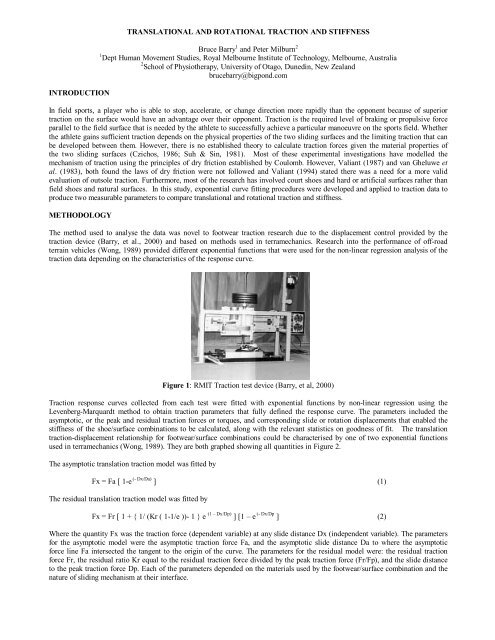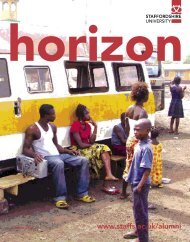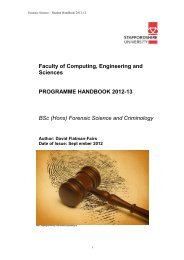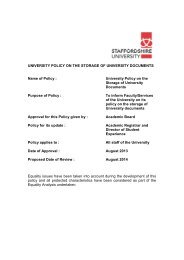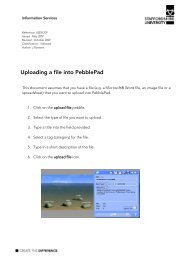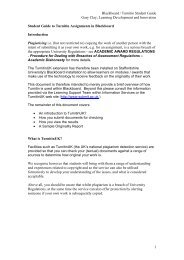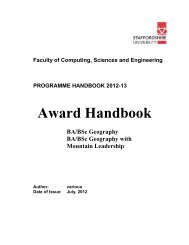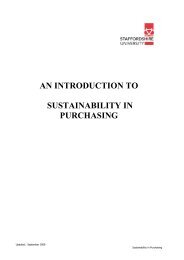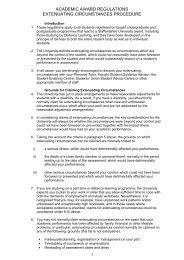Translational and rotational traction and stiffness
Translational and rotational traction and stiffness
Translational and rotational traction and stiffness
You also want an ePaper? Increase the reach of your titles
YUMPU automatically turns print PDFs into web optimized ePapers that Google loves.
INTRODUCTION<br />
TRANSLATIONAL AND ROTATIONAL TRACTION AND STIFFNESS<br />
Bruce Barry 1 <strong>and</strong> Peter Milburn 2<br />
1 Dept Human Movement Studies, Royal Melbourne Institute of Technology, Melbourne, Australia<br />
2 School of Physiotherapy, University of Otago, Dunedin, New Zeal<strong>and</strong><br />
brucebarry@bigpond.com<br />
In field sports, a player who is able to stop, accelerate, or change direction more rapidly than the opponent because of superior<br />
<strong>traction</strong> on the surface would have an advantage over their opponent. Traction is the required level of braking or propulsive force<br />
parallel to the field surface that is needed by the athlete to successfully achieve a particular manoeuvre on the sports field. Whether<br />
the athlete gains sufficient <strong>traction</strong> depends on the physical properties of the two sliding surfaces <strong>and</strong> the limiting <strong>traction</strong> that can<br />
be developed between them. However, there is no established theory to calculate <strong>traction</strong> forces given the material properties of<br />
the two sliding surfaces (Czichos, 1986; Suh & Sin, 1981). Most of these experimental investigations have modelled the<br />
mechanism of <strong>traction</strong> using the principles of dry friction established by Coulomb. However, Valiant (1987) <strong>and</strong> van Gheluwe et<br />
al. (1983), both found the laws of dry friction were not followed <strong>and</strong> Valiant (1994) stated there was a need for a more valid<br />
evaluation of outsole <strong>traction</strong>. Furthermore, most of the research has involved court shoes <strong>and</strong> hard or artificial surfaces rather than<br />
field shoes <strong>and</strong> natural surfaces. In this study, exponential curve fitting procedures were developed <strong>and</strong> applied to <strong>traction</strong> data to<br />
produce two measurable parameters to compare translational <strong>and</strong> <strong>rotational</strong> <strong>traction</strong> <strong>and</strong> <strong>stiffness</strong>.<br />
METHODOLOGY<br />
The method used to analyse the data was novel to footwear <strong>traction</strong> research due to the displacement control provided by the<br />
<strong>traction</strong> device (Barry, et al., 2000) <strong>and</strong> based on methods used in terramechanics. Research into the performance of off-road<br />
terrain vehicles (Wong, 1989) provided different exponential functions that were used for the non-linear regression analysis of the<br />
<strong>traction</strong> data depending on the characteristics of the response curve.<br />
Figure 1: RMIT Traction test device (Barry, et al, 2000)<br />
Traction response curves collected from each test were fitted with exponential functions by non-linear regression using the<br />
Levenberg-Marquardt method to obtain <strong>traction</strong> parameters that fully defined the response curve. The parameters included the<br />
asymptotic, or the peak <strong>and</strong> residual <strong>traction</strong> forces or torques, <strong>and</strong> corresponding slide or rotation displacements that enabled the<br />
<strong>stiffness</strong> of the shoe/surface combinations to be calculated, along with the relevant statistics on goodness of fit. The translation<br />
<strong>traction</strong>-displacement relationship for footwear/surface combinations could be characterised by one of two exponential functions<br />
used in terramechanics (Wong, 1989). They are both graphed showing all quantities in Figure 2.<br />
The asymptotic translation <strong>traction</strong> model was fitted by<br />
Fx = Fa [ 1-e (- Dx/Da) ] (1)<br />
The residual translation <strong>traction</strong> model was fitted by<br />
Fx = Fr [ 1 + { 1/ (Kr ( 1-1/e ))- 1 } e (1 – Dx/Dp) ] [1 – e (- Dx/Dp ] (2)<br />
Where the quantity Fx was the <strong>traction</strong> force (dependent variable) at any slide distance Dx (independent variable). The parameters<br />
for the asymptotic model were the asymptotic <strong>traction</strong> force Fa, <strong>and</strong> the asymptotic slide distance Da to where the asymptotic<br />
force line Fa intersected the tangent to the origin of the curve. The parameters for the residual model were: the residual <strong>traction</strong><br />
force Fr, the residual ratio Kr equal to the residual <strong>traction</strong> force divided by the peak <strong>traction</strong> force (Fr/Fp), <strong>and</strong> the slide distance<br />
to the peak <strong>traction</strong> force Dp. Each of the parameters depended on the materials used by the footwear/surface combination <strong>and</strong> the<br />
nature of sliding mechanism at their interface.
0<br />
Force (N)<br />
-50<br />
-100<br />
Fp Fa Fr<br />
-150<br />
Da Elasto-plastic model<br />
Dp<br />
-200<br />
0 5 10 15 20<br />
Slide distance Dx (mm)<br />
Residual model<br />
Asymptotic model<br />
Elasto-plastic model<br />
Figure 2: The translation <strong>traction</strong>-displacement residual <strong>and</strong> asymptotic exponential models for a footwear/surface combination<br />
showing all defined quantities in Equations (1) <strong>and</strong> (2).<br />
The rotation <strong>traction</strong> torque-angular displacement relationship were characterised by the same two expressions with the quantities,<br />
Fx replaced by Tz, <strong>and</strong> Dx by θz. The parameters, Fa replaced by Ta, Da by θa, Fr by Tr, Dp by θp, <strong>and</strong> Kr would equal Tr/Tp.<br />
Therefore, the <strong>rotational</strong> exponential functions would be as follows,<br />
Asymptotic rotation <strong>traction</strong> model was given by<br />
Tz = Ta [ 1-e (- θz/θa) ] (3)<br />
Residual rotation <strong>traction</strong> model was given by<br />
Tz = Tr [ 1 + { 1/ (Kr ( 1-1/e ))- 1 } e (1 – θz/θp) ] [1 – e (- θz/θp ] (4)<br />
The elasto-plastic model shown in Figure 2 can approximate these models. For the asymptotic model in translation:<br />
For rotation they would be:<br />
Fx = (Fa / Da) Dx for (0 < Dx < Da), <strong>and</strong> (5)<br />
Fx = Fa for (Dx ≥ Da) (6)<br />
Tx = (Ta / θa) θx for (0 < θx < θa), <strong>and</strong> (7)<br />
Tx = Ta for (θx ≥ θa) (8)<br />
The ratio Fa/Da is the <strong>stiffness</strong> of the footwear/surface combination having units of N/mm. The rotation model <strong>stiffness</strong> was Ta/θa<br />
having units equal to Nm/deg.<br />
CONCLUSIONS<br />
The exponential curve fitting procedures developed were applied to <strong>traction</strong> data to produce two measurable parameters to<br />
compare translational <strong>and</strong> <strong>rotational</strong> <strong>traction</strong> <strong>and</strong> <strong>stiffness</strong> on a variety of surfaces. These two parameters provide a more valid <strong>and</strong><br />
reliable explanation of the mechanism by which <strong>traction</strong> at the shoe-surface interaction is generated.<br />
REFERENCES<br />
Barry, EB, Kummer, R, Milburn, PD (2000) in The Engineering of Sport. Oxford, Engl<strong>and</strong>: Blackwell Scientific, 103-112.<br />
Czichos, H (1986) in Friction <strong>and</strong> Wear of Polymer Composites, Amsterdam; Elsevier, 1-11.<br />
Suh, NP, Sin, HC (1981) The genesis of friction. Wear, 69, 91-114<br />
Valiant, GA (1987) in Proc Int Symp Biomech Sports III & IV., 29-37.<br />
Valiant, GA (1994) in Proc Eighth Canadian Soc Biomech. Conf. Calgary, 326-327.<br />
Van Gheluwe, B, Depone, E, Hebbelink, M (1983) in Biomechanical Aspects of Sports Shoes <strong>and</strong> Playing Surfaces. University of<br />
California, 161-168.<br />
Wong, JY (1989) Terramechanics <strong>and</strong> Off-Road Vehicles. Amsterdam: Elsevier


